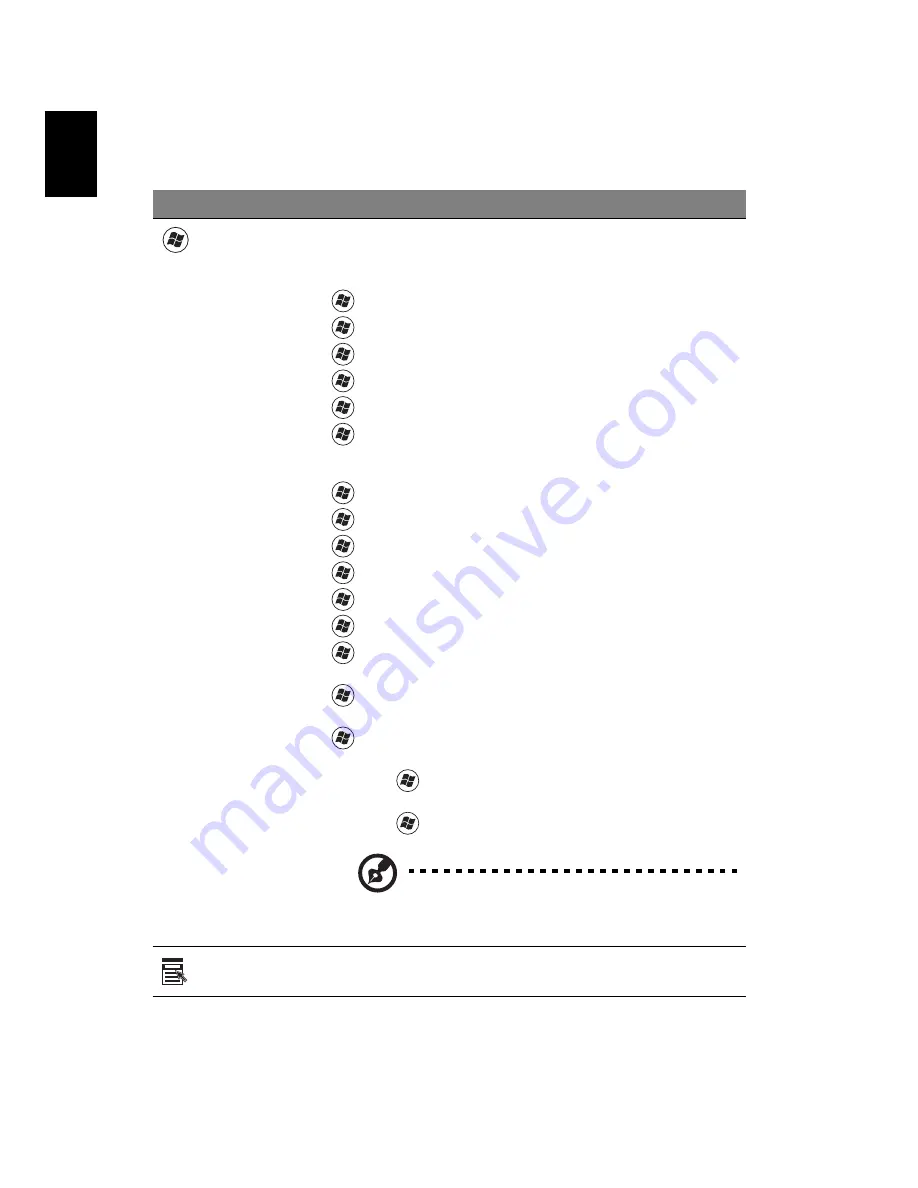
3
English
Windows keys
The keyboard has two keys that perform Windows-specific functions.
Key
Description
Windows key
Pressed alone, this key has the same effect as clicking on the
Windows Start button; it launches the Start menu.
It can also be used with other keys to provide a variety of
functions:
<
> : Open or close the Start menu
<
> + <D>: Display the desktop
<
> + <E>: Open Windows Explore
<
> + <F>: Search for a file or folder
<
> + <G>: Cycle through Sidebar gadgets
<
> + <L>: Lock your computer (if you are connected to a
network domain), or switch users (if you're not connected to a
network domain)
<
> + <M>: Minimizes all windows
<
> + <R>: Open the Run dialog box
<
> + <T>: Cycle through programs on the taskbar
<
> + <U>: Open Ease of Access Center
<
> + <X>: Open Windows Mobility Center
<
> + <BREAK>: Display the System Properties dialog box
<
> + <SHIFT+M>: Restore minimized windows to the
desktop
<
> + <TAB>: Cycle through programs on the taskbar by
using Windows Flip 3-D
<
> + <SPACEBAR>: Bring all gadgets to the front and select
Windows Sidebar
<CTRL> + <
> + <F>: Search for computers (if you are on a
network)
<CTRL> + <
> + <TAB>: Use the arrow keys to cycle through
programs on the taskbar by using Windows Flip 3-D
Note: Depending on your edition of Windows
Vista or Windows XP, some shortcuts may not
function as described.
Application
key
This key has the same effect as clicking the right mouse button;
it opens the application's context menu.
















































